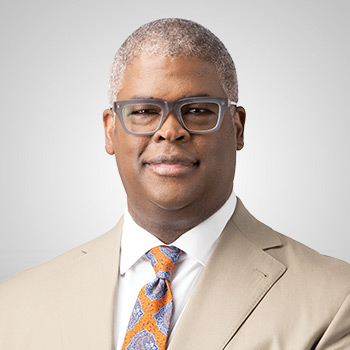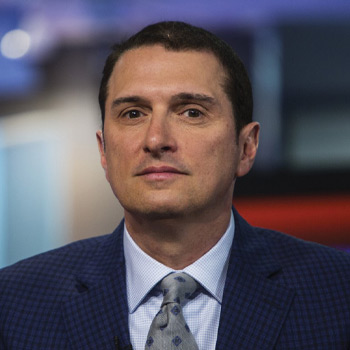Oil demand continues to rise, defying negative predictions about the economy and the lackluster market action that continues to wait for the other shoe to drop, states Phil Flynn of PRICE Futures Group.
This comes as the market is trying to ignore the impact of Saudi Arabia’s surprise production cut on the belief that they won’t have the determination to follow through with it even though they raised prices and reports that Asian refiners are scrambling.
The Energy Information Administration (EIA) in their Short-Term energy outlook once again raised the forecast for global oil demand saying it increase by 1.6 million barrels per day (b/d) in 2023 from an average of 99.4 million b/d last year to 100.99 million barrels a day. That increase is having the EIA catch up with data From JODI that has shown global oil demand at an all-time high. The EIA also says demand will continue to grow by an additional 1.7 million b/d in 2024.
The International Energy Agency Executive Director Fatih Birol predicts a very tight oil market in the second half of the year and tells Bloomberg that he sees China as the “most important” uncertainty in the global oil market as production cuts from OPEC+ may put upward pressure on prices. Do you think?
The World Bank which has been surprised about the resiliency of the global economy now predicts that worldwide gross domestic product (GDP) would rise 2.3% this year, higher than its January forecast of up 1.7% but still below last year’s 3.1% gain. It still warns that the global economy is “in a precarious position,” but scratches its head as to why the economy is outperforming its dire predictions.
Oil traders are starting to wonder why the American Petroleum Institute (API) reports oil supply number did not see the whisper number increase. Instead, oil supply reportedly fell by 1.71M barrels of oil in US commercial stockpiles for the week ending June second. That’s a sign that refiners are ramping up, trying to meet demand, and allowing them to beef up product supplies that are still too far below normal for this time of year.
API showed gasoline inventories reportedly show a build of 2.42M barrels for the week, distillate inventories show a build of 4.5M barrels, and stockpiles at the Cushing, Oklahoma, storage hub show a build of 1.53M barrels.
The larger issue for oil continues to be the underinvestment in fossil fuels that is leading to a long-term structural shortage. That continues to be fed by short-sighted energy zealots and major agencies that have bought into the green energy pipe dream that continues to subtract fossil fuel investment and try to replace it with investment in green energy that cannot replace the power lost by the subtraction of fossil fuels. Yet despite evidence that the globe is on an energy shortage suicide mission, the IEA continues to double down on demands that we stop investing in fossil fuels. The IEA in a “special briefing report published today for the Global Conference—Energy Efficiency: The Decade for Action—highlights that ramping up annual energy efficiency progress from 2.2% today to over 4% annually by 2030 would deliver vital reductions in greenhouse gas emissions and at the same time create jobs, expand energy access, reduce energy bills, decrease air pollution, and diminish countries’ reliance on fossil fuel imports—among other social and economic benefits.” The IEA reports that “Energy efficiency investment in 2023 is expected to reach record levels, despite a slowdown in year-on-year growth as the high cost of capital weighs heavily on potential new projects. Under current expected and announced policies, efficiency-related investment is projected to rise by a further 50%. However, to see annual progress double, investments in the sector must increase from USD 600 billion today to over USD 1.8 trillion by 2030.
Increasing investment in green energy is taking away investment from more reliable and cheaper fossil fuels and is increasingly leaving economies and power grids at risk. This may get some blowback from Europe where the green energy zealots have raised the prices for energy creating power instability along with the increase of geopolitical risk. We are seeing resistance to the radical green agenda and the ESG movement. Yet the remnants of this agenda have led to global instability.
On a positive note, Reuters reported that, ”The European Commission said on Monday it had decided not to prolong emergency measures introduced last year to shield consumers from soaring energy prices, adding those measures had helped to contribute to a calming of European energy markets. At the end of 2022, the 27-member European Union was during an acute energy crisis fueled by Russia’s invasion of Ukraine, with member states then plowing hundreds of billions of euros into tax cuts, handouts, and subsidies to tackle the crisis.”
Reuters Clyde Russell wrote, “Having been surprised by Saudi Arabia announcing a unilateral one million barrels per day cut in oil output for July, oil refiners got more bad news when Saudi Aramco informed Asian customers that prices for July-loading cargoes were going up. Before the decision to increase the official selling prices (OSPs) for crude to be shipped in July, refiners in the top-importing region had been expecting prices to be lowered.”
He said that with the decision to increase the Official Selling Price OSP, Saudi Arabia’s Asian customers are facing the prospect of margins shrinking even further, as well as uncertainty over the state of demand given rising fears of a global recession. How they respond will be key to the path of crude oil prices in the coming months. He says that “The obvious path for Asian refiners to go down is to buy less Saudi oil, or crudes from other Middle East producers who tend to follow the Saudi lead on pricing. Aramco sells the bulk of its crude under term contracts, but it is believed that these include provisions for either party to vary volumes up to a certain level. This allows Aramco to reduce the volume supplied when the Saudis decide to cut output, as they just did. But it also allows refiners to lower the amount of crude they buy from the kingdom if they are concerned about fuel demand, or indeed if they take the view Saudi crude is uncompetitive against competing grades.”
He writes, “The problem for refiners in Asia is that there are limited alternatives to the crude supplied by the Saudis and other Middle East producers such as the United Arab Emirates, Iraq, and Kuwait. Russian, Iranian, and Venezuelan crudes are all under some form of Western sanctions, meaning they can only be bought by the big players in China and India. US crude and other grades from exporters in the Americas such as Brazil and Mexico can go some way to replacing barrels from the Middle East, but these must be significantly cheaper to make the economics work, given the higher freight and insurance costs involved. Ultimately, some refiners in Asia will face the choice of shrinking their profit margins even further or reducing throughput in the hope of boosting retail fuel prices by creating scarcity.”
Scarcity is going to be a larger issue later in the year. While prices lag, there are technical signs that we have bottomed out. We should see gas prices tend higher into the Fourth of July.
Natural gas is creeping up. EBW Analytics reports that the NYMEX front-month rose 9.0¢ to start the week as mid-to-late June forecasts showed bullish promise of long-awaited heat. Still, gains are meager in the context of the 24% July contract plunge over the prior two weeks. In the immediate term, extensive maintenance of Sabine Pass LNG—daily feed gas has dropped to two-year lows—has contributed to Henry Hub cash prices struggling to clear above $2.00/MMBtu over the past ten days. Further, storage surpluses may swell over the next trio of EIA reports before stabilizing. Still, the late June combo of rising cooling demand and rebounding LNG creates a bullish market setup heading into mid-summer. While comparisons to the 2020 pandemic are fraught, a significant upside may await by late fall as storage containment concerns appear likely to be averted.
Learn more about Phil Flynn by visiting Price Futures Group.




















